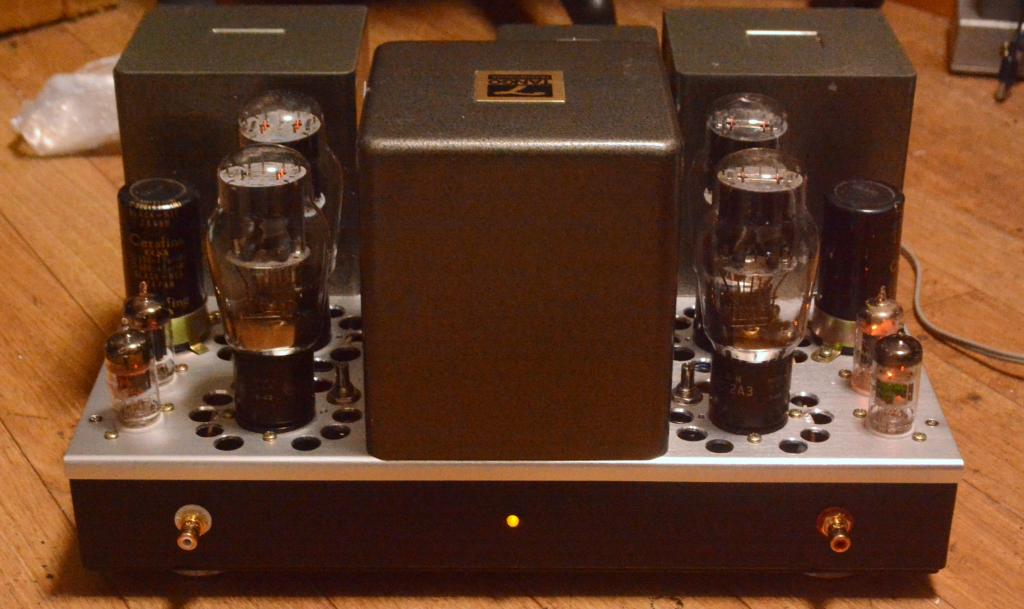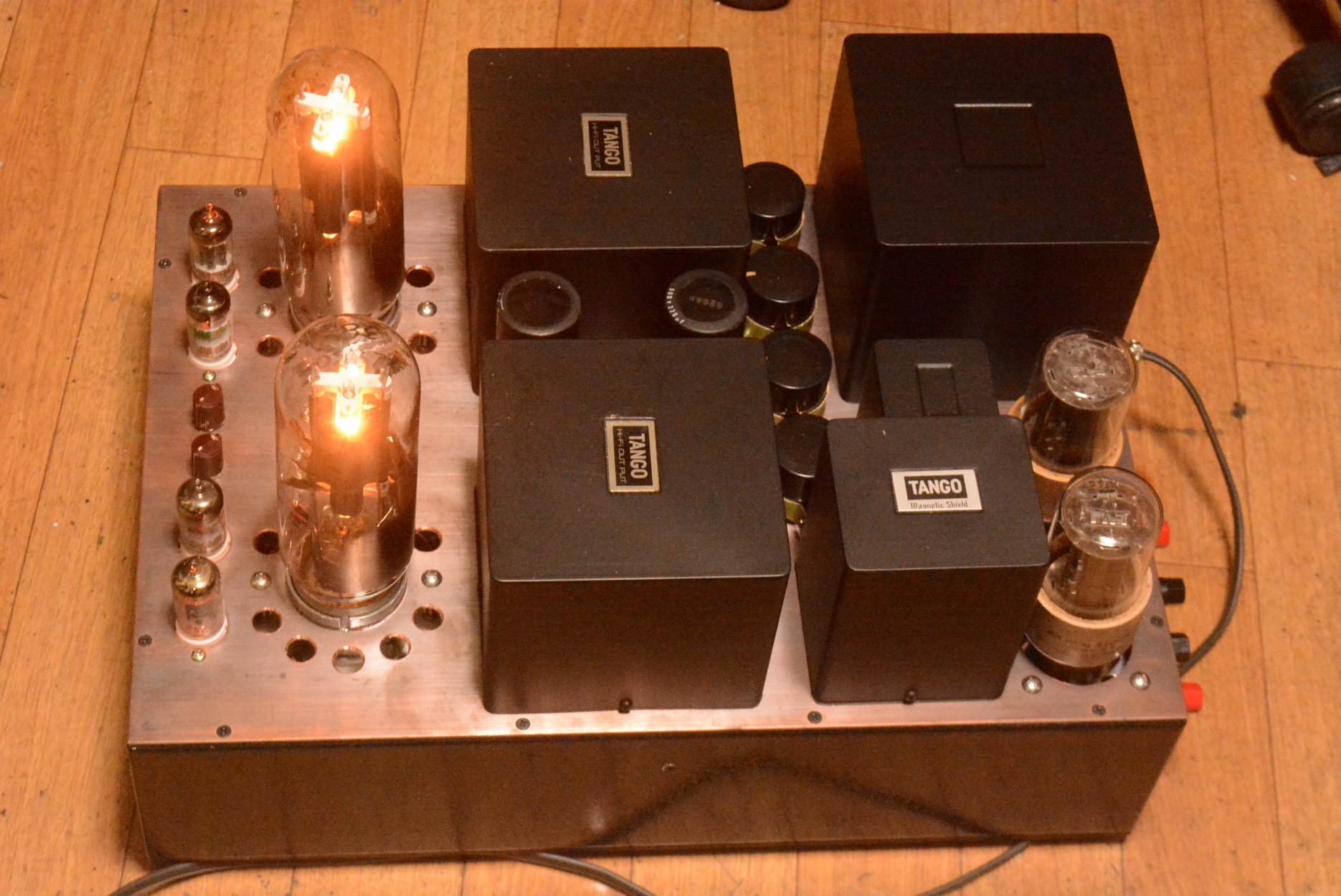We can provide power transformer which use for 117V, 220V, 230V, 240V.
YouTube channel > Otomon YouTube Channel
Facebook Channel: Otomon Vintage FB
YouTube channel > Otomon YouTube Channel
Facebook Channel: Otomon Vintage FB
I will give discount 10% or more for all item in my eBay listing, Contact Us for more detail
Audio Discussion - Master Kondo -Audio Note (Part 2)
To be continued the article of Master Kondo founder of AudioNote Kondo Japan.
Part 2 (written in summer, 1999)
Sound of Transformer Part 1
Those who have studied electricity have little knowledge of transformers, because school usually teaches only industrial-use power transformers. Therefore, audiophiles or audio engineers are forced to study transformers through Hi-Fi specialty magazines. Even those publications do not give much space to articles on transformers. Is this an indication that audio transformers are a history? Certainly, the transformer has some inherent problems such as mu-linearity of magnetic core, distortion of exciting current, and Barkhausen noise. Fastidious theoreticians cannot stand these kinds of problems. Cost-conscious engineers try to avoid transformers and design circuits consisting of only capacitors and resistors.
Part 2 (written in summer, 1999)
Sound of Transformer Part 1
Those who have studied electricity have little knowledge of transformers, because school usually teaches only industrial-use power transformers. Therefore, audiophiles or audio engineers are forced to study transformers through Hi-Fi specialty magazines. Even those publications do not give much space to articles on transformers. Is this an indication that audio transformers are a history? Certainly, the transformer has some inherent problems such as mu-linearity of magnetic core, distortion of exciting current, and Barkhausen noise. Fastidious theoreticians cannot stand these kinds of problems. Cost-conscious engineers try to avoid transformers and design circuits consisting of only capacitors and resistors.
Transformers were excluded from electrical circuits. I think this is wrong. I still believe that high-quality transformers produce nice tone.
I can quote a number of good examples. At broadcasting stations, for one, sound signals are transmitted through tens of transformers from their entrance to exit. If the transformer is the root of all problems, TV and FM stations are to be delivering terrible sound. But actually their sound is not bad. Why is that? I want to answer this question.
Sound of Transformer Part 2
It really interests me how tone quality changes when the sound passes through a transformer. The transformer can be regarded as a filter with time constant in the low and high frequency ranges. This explains why audio engineers were greatly concerned over expanding the frequency response in that prime era of transformers. Even today I fear to leave a transformer on for a long time, because I remember that over-heated power transformers caused fire from time to time. It was quite a task to manufacture high-quality transformers when both iron cores and wire materials were of inferior quality. As the result of having experimented with many different transformers I can classify tone quality into two categories: soft tone and hard tone. A major factor deciding tone quality lies in materials of wires and cores. Let's start with core materials. There are permalloy for small signals and silicon steel for medium and large signals. If a certain kind of core is good for all, this would be the most ideal. In reality, however, a proper core must be chosen depending on the initial responding speed of magnetic flux in the small range and the maximum magnetic flux density. Permalloy and silicon steel produce respective different tones.
Sound of Iron Core
Iron cores are used for transformers. As the signal transformer has a voluminous winding, signals directly pass, even without the iron core, in the high frequency range. Problem is the low and medium frequency ranges. Here lies a problem inherent in the transformer. The property of the iron core is first judged by its hysteresis curve. But this is merely a criterion, because measuring is done on the winding iron core. Next, it is judged by how much magnetic flux can pass through it and where the saturation point is. While these procedures are enough for power transformers, further studies are required of for audio transformers. In case of the power transformer transmission of minute signals does not have to be considered. In order to transmit minute signals an iron core is needed that sensitively reacts in a very low magnetic field. To this end, a core named "nickel core" containing 45 to 78% nickel is usually necessary. A problem with the nickel core is its low density of the maximum magnetic flux. Furthermore, there are so many different kinds of nickel cores, each producing different tones. Generally speaking, the less the nickel content, the harder the tone. On the other hand, the tone produced by silicon steel (OPT) tends to be soft. The tone has little clear boundaries, because magnetic flux does not occur in the small signal range.
Rendezvous of Transformer and Silver Wire
There are many factors that might decide tone quality of the transformer. In particular, winding materials play an important role. In comparison of tone quality between OPT for the single-ended amplifier and that for the push-pull amplifier, the former seems to produce clearer outline of tone. I can think of various factors to explain this difference, but there is one thing that nobody has so far taken notice of. It is whether there exists any magnetic field generated by the direct current applied to the winding material, depending on OPT for the single-ended amplifier or that for the push-pull amplifier. It seems to me that this magnetic field generated by the direct current might make the difference of tone quality between the two winding materials. In other words, this is the relationship between the magnetic field and the behaviour of the electron. Experience tells that when you wind wire around a horseshoe-shaped magnet and send signals through it you would notice a more conspicuous change in tone quality due to the difference of wire materials than when there is no magnet. Repeated experiments show that the "silver wire" produces less changes. The "copper wire" usually make the tone coarse. If you wind silver wire around the transformer the conventional tone changes dramatically. Now, the statement that the transformer deteriorates tone quality seems to be rootless. This fact cannot be denied just because electric theory has not clarified the relationship between magnetic field and silver yet. Sooner or later, people will start looking squarely at the reality. I might add that direct current magnetic field still remains in OPT for the push-pull amplifier of Audio Note Japan.
Sound of Transformer Part 2
It really interests me how tone quality changes when the sound passes through a transformer. The transformer can be regarded as a filter with time constant in the low and high frequency ranges. This explains why audio engineers were greatly concerned over expanding the frequency response in that prime era of transformers. Even today I fear to leave a transformer on for a long time, because I remember that over-heated power transformers caused fire from time to time. It was quite a task to manufacture high-quality transformers when both iron cores and wire materials were of inferior quality. As the result of having experimented with many different transformers I can classify tone quality into two categories: soft tone and hard tone. A major factor deciding tone quality lies in materials of wires and cores. Let's start with core materials. There are permalloy for small signals and silicon steel for medium and large signals. If a certain kind of core is good for all, this would be the most ideal. In reality, however, a proper core must be chosen depending on the initial responding speed of magnetic flux in the small range and the maximum magnetic flux density. Permalloy and silicon steel produce respective different tones.
Sound of Iron Core
Iron cores are used for transformers. As the signal transformer has a voluminous winding, signals directly pass, even without the iron core, in the high frequency range. Problem is the low and medium frequency ranges. Here lies a problem inherent in the transformer. The property of the iron core is first judged by its hysteresis curve. But this is merely a criterion, because measuring is done on the winding iron core. Next, it is judged by how much magnetic flux can pass through it and where the saturation point is. While these procedures are enough for power transformers, further studies are required of for audio transformers. In case of the power transformer transmission of minute signals does not have to be considered. In order to transmit minute signals an iron core is needed that sensitively reacts in a very low magnetic field. To this end, a core named "nickel core" containing 45 to 78% nickel is usually necessary. A problem with the nickel core is its low density of the maximum magnetic flux. Furthermore, there are so many different kinds of nickel cores, each producing different tones. Generally speaking, the less the nickel content, the harder the tone. On the other hand, the tone produced by silicon steel (OPT) tends to be soft. The tone has little clear boundaries, because magnetic flux does not occur in the small signal range.
Rendezvous of Transformer and Silver Wire
There are many factors that might decide tone quality of the transformer. In particular, winding materials play an important role. In comparison of tone quality between OPT for the single-ended amplifier and that for the push-pull amplifier, the former seems to produce clearer outline of tone. I can think of various factors to explain this difference, but there is one thing that nobody has so far taken notice of. It is whether there exists any magnetic field generated by the direct current applied to the winding material, depending on OPT for the single-ended amplifier or that for the push-pull amplifier. It seems to me that this magnetic field generated by the direct current might make the difference of tone quality between the two winding materials. In other words, this is the relationship between the magnetic field and the behaviour of the electron. Experience tells that when you wind wire around a horseshoe-shaped magnet and send signals through it you would notice a more conspicuous change in tone quality due to the difference of wire materials than when there is no magnet. Repeated experiments show that the "silver wire" produces less changes. The "copper wire" usually make the tone coarse. If you wind silver wire around the transformer the conventional tone changes dramatically. Now, the statement that the transformer deteriorates tone quality seems to be rootless. This fact cannot be denied just because electric theory has not clarified the relationship between magnetic field and silver yet. Sooner or later, people will start looking squarely at the reality. I might add that direct current magnetic field still remains in OPT for the push-pull amplifier of Audio Note Japan.
The Other Same Items
Newest Items In Same Category


